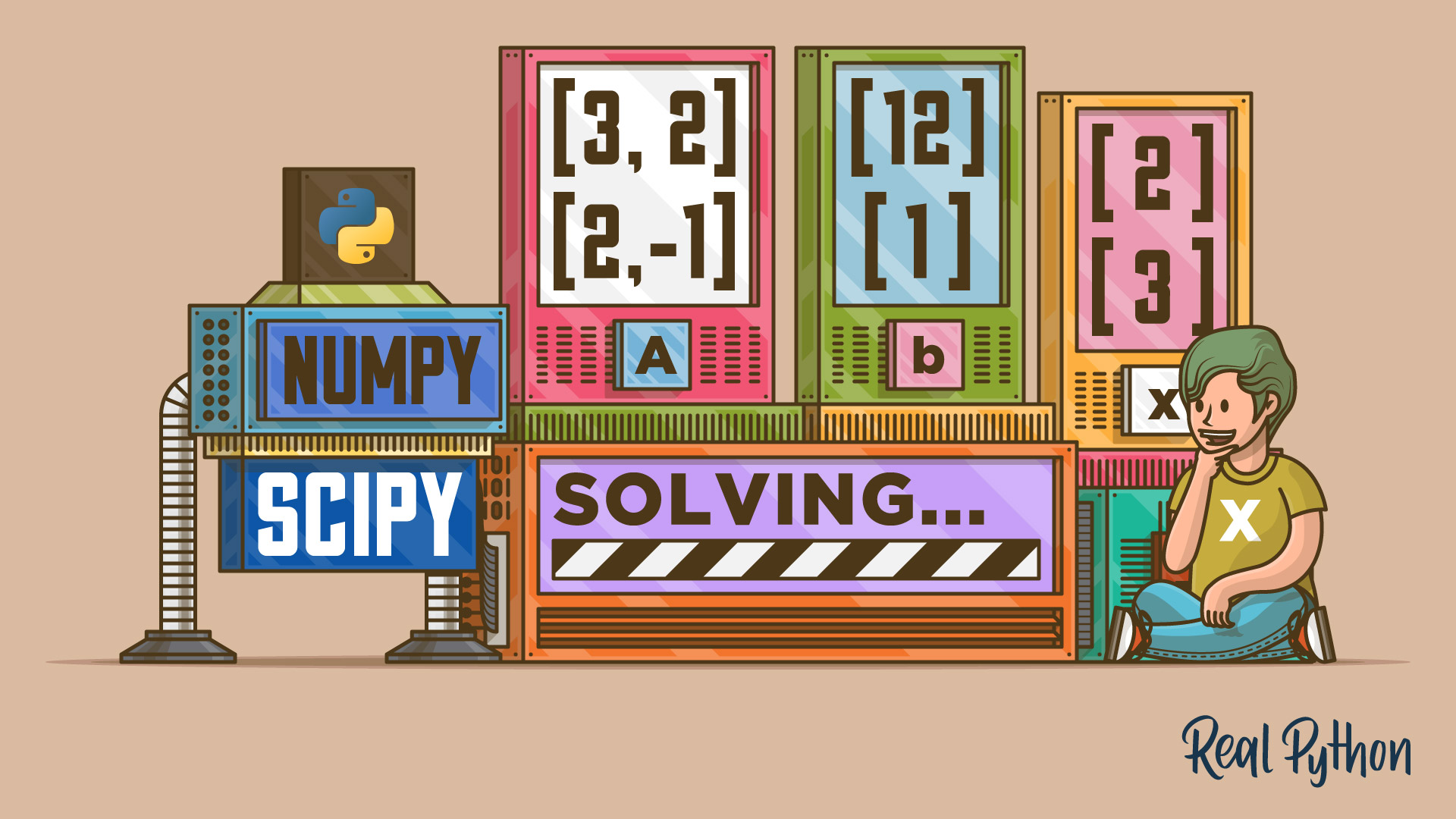

# singular (which it, by construction, is!). # The LU decomposition raises a warning when the generator matrix is If the Markov chain does not have a unique stationary distribution. The unnormalized stationary distribution of the Markov chain. Infinitesimal generator matrix of the Markov chain. The factorizes the matrix ‘a’ into two unitary matrices ‘U’ and ‘Vh’ and a 1-D array ‘s’ of singular values (real, non-negative) such that a = U*S*Vh, where ‘S’ is a suitably shaped matrix of zeros with the main diagonal ‘s’.Ī = np.random.randn(3, 2) + 1.j*np.random.randn(3, 2) This function returns the Eigen values and the Eigen vectors.Īrray() #-Eigen ValuesĪrray(, #-Eigen VectorsĪ Singular Value Decomposition (SVD) can be thought of as an extension of the eigenvalue problem to matrices that are not square. computes the eigenvalues from an ordinary or generalized eigenvalue problem. We can find the Eigen values (λ) and the corresponding Eigen vectors (v) of a square matrix (A) by considering the following relation − The eigenvalue-eigenvector problem is one of the most commonly employed linear algebra operations. It takes a matrix as input and returns a scalar value. In SciPy, this is computed using the det() function. The determinant of a square matrix A is often denoted as |A| and is a quantity often used in linear algebra. The above program will generate the following output. #Passing the values to the solve function The solve function takes two inputs ‘a’ and ‘b’ in which ‘a’ represents the coefficients and ‘b’ represents the respective right hand side value and returns the solution array.Ī = np.array(,, ]) However, it is better to use the linalg.solve command, which can be faster and more numerically stable. To solve the above equation for the x, y, z values, we can find the solution vector using a matrix inverse as shown below. The feature solves the linear equation a * x + b * y = Z, for the unknown x, y values.Īs an example, assume that it is desired to solve the following simultaneous equations. Therefore, the SciPy version might be faster depending on how NumPy was installed. Another advantage of using scipy.linalg over numpy.linalg is that it is always compiled with BLAS/LAPACK support, while for NumPy this is optional. Additionally, scipy.linalg also has some other advanced functions that are not in numpy.linalg.

SciPy.linalg vs NumPy.linalgĪ scipy.linalg contains all the functions that are in numpy.linalg. The output of these routines is also a two-dimensional array. All of these linear algebra routines expect an object that can be converted into a two-dimensional array. It has very fast linear algebra capabilities. SciPy is built using the optimized ATLAS LAPACK and BLAS libraries.


 0 kommentar(er)
0 kommentar(er)
